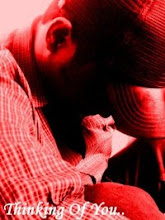Berikut ini adalah tips dari Lawrence Kane tentang berlatih makiwara dengan aman:
Be sure that no pre-existing arthritic conditions, fractures, or other hand or foot injuries exist before training on the makiwara. If in doubt, check with your physician as well as your instructor.
• If you injure your knuckles-tearing, bruising, bleeding, or any other damage-stop training until you are fully healed. In most cases you may still strike the makiwara with uninjured parts of the hand or foot (e.g., palm heel, blade edge).
• Do not use the makiwara if you have an open wound. If anyone is cut and bleeds on the makiwara striking pad, clean the affected area with a mixture of bleach and water to reduce the possibility of blood-borne pathogen contamination. While HIV can only survive for a few seconds outside the body certain contagions such as hepatitis can even be transmitted via dried blood.
• Only train under proper supervision until you have developed a level of expertise that your sensei (instructor) feels is appropriate to warrant practice on your own.
• Exercise proper form when punching-keep your wrist straight, and do not lock your elbow at full extension. Proper body alignment not only increases the power of your technique but also protects against injury.
• Hit only with the appropriate portion of your hand or foot. When performing seiken tsuki (fore fist punch) or tate tsuki (standing punch), for example, connect with only your first two knuckles (~ 80% impact on the first knuckle). Wrist injuries or boxer's fractures (breaking the metacarpal along the top of the hand and/or breaking the knuckle of the little or ring finger) are likely to occur if you hit improperly.
• Do not perform nukite (finger strikes) or head butts on the makiwara. Either technique is likely to cause injury.
• Start with half-power blows, aiming at the surface of the board. Gradually increase the force you apply over time, shifting your aim further and further through the makiwara. Limit the number of punches you throw with each part of your hand (e.g., knuckles, palm, edge), especially in your first few training sessions.
• Do not let young children use the makiwara. A practitioner's hand should be fully developed before striking any solid surface. Depending on the individual, youths 16 years of age and older should be able to use the makiwara safely under proper supervision.
• Ensure that the makiwara is properly built and in good repair before striking it. There should be no splinters or cracks in the wood. It should retain sufficient flexibility to absorb blows and possess adequate padding. If in doubt, it is better to be too flexible than not flexible enough.
 Lawrence Kane is the author of Martial Arts Instruction: Applying Educational Theory and Communication Techniques in the Dojo and co-author of The Way of Kata: A Comprehensive Guide to Deciphering Martial Applications. Over the last 30 or so years, he has participated in a broad range of martial arts, from traditional Asian sports such as judo, arnis, kobudo, and karate to recreating medieval European combat with real armor and rattan (wood) weapons. He has taught medieval weapons forms since 1994 and Goju Ryu karate since 2002. He has also completed seminars in modern gun safety, marksmanship, handgun retention and knife combat techniques, and he has participated in slow-fire pistol and pin shooting competitions.
Lawrence Kane is the author of Martial Arts Instruction: Applying Educational Theory and Communication Techniques in the Dojo and co-author of The Way of Kata: A Comprehensive Guide to Deciphering Martial Applications. Over the last 30 or so years, he has participated in a broad range of martial arts, from traditional Asian sports such as judo, arnis, kobudo, and karate to recreating medieval European combat with real armor and rattan (wood) weapons. He has taught medieval weapons forms since 1994 and Goju Ryu karate since 2002. He has also completed seminars in modern gun safety, marksmanship, handgun retention and knife combat techniques, and he has participated in slow-fire pistol and pin shooting competitions.Since 1985 Lawrence has supervised employees who provide security and oversee fan safety during college and professional football games at a Pac-10 stadium. This job has given him a unique opportunity to appreciate violence in a myriad of forms. Along with his crew, he has witnessed, interceded in, and stopped or prevented hundreds of fights, experiencing all manner of aggressive behaviors as well as the escalation process that invariably precedes them. He has also worked closely with the campus police and state patrol officers who are assigned to the stadium and has had ample opportunities to examine their crowd control tactics and procedures. Lawrence lives in Seattle, Washington. He can be contacted via e-mail

Tidak ada komentar:
Posting Komentar